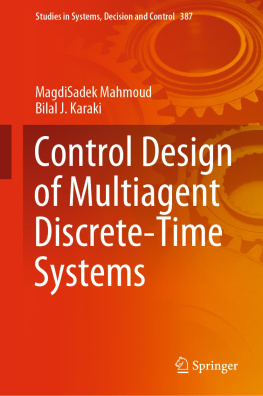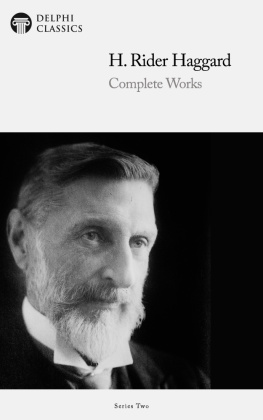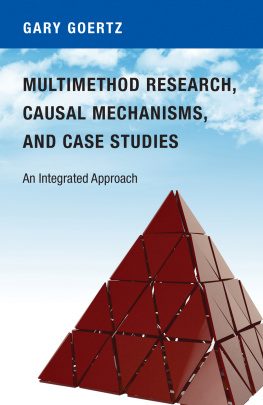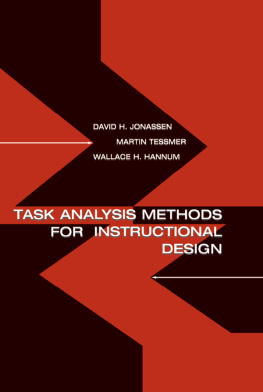Rider - Design and analysis of mechanisms a planar approach
Here you can read online Rider - Design and analysis of mechanisms a planar approach full text of the book (entire story) in english for free. Download pdf and epub, get meaning, cover and reviews about this ebook. City: Chichester, year: 2015, publisher: John Wiley & Sons, Incorporated, genre: Home and family. Description of the work, (preface) as well as reviews are available. Best literature library LitArk.com created for fans of good reading and offers a wide selection of genres:
Romance novel
Science fiction
Adventure
Detective
Science
History
Home and family
Prose
Art
Politics
Computer
Non-fiction
Religion
Business
Children
Humor
Choose a favorite category and find really read worthwhile books. Enjoy immersion in the world of imagination, feel the emotions of the characters or learn something new for yourself, make an fascinating discovery.

- Book:Design and analysis of mechanisms a planar approach
- Author:
- Publisher:John Wiley & Sons, Incorporated
- Genre:
- Year:2015
- City:Chichester
- Rating:5 / 5
- Favourites:Add to favourites
- Your mark:
- 100
- 1
- 2
- 3
- 4
- 5
Design and analysis of mechanisms a planar approach: summary, description and annotation
We offer to read an annotation, description, summary or preface (depends on what the author of the book "Design and analysis of mechanisms a planar approach" wrote himself). If you haven't found the necessary information about the book — write in the comments, we will try to find it.
Rider: author's other books
Who wrote Design and analysis of mechanisms a planar approach? Find out the surname, the name of the author of the book and a list of all author's works by series.
Design and analysis of mechanisms a planar approach — read online for free the complete book (whole text) full work
Below is the text of the book, divided by pages. System saving the place of the last page read, allows you to conveniently read the book "Design and analysis of mechanisms a planar approach" online for free, without having to search again every time where you left off. Put a bookmark, and you can go to the page where you finished reading at any time.
Font size:
Interval:
Bookmark:
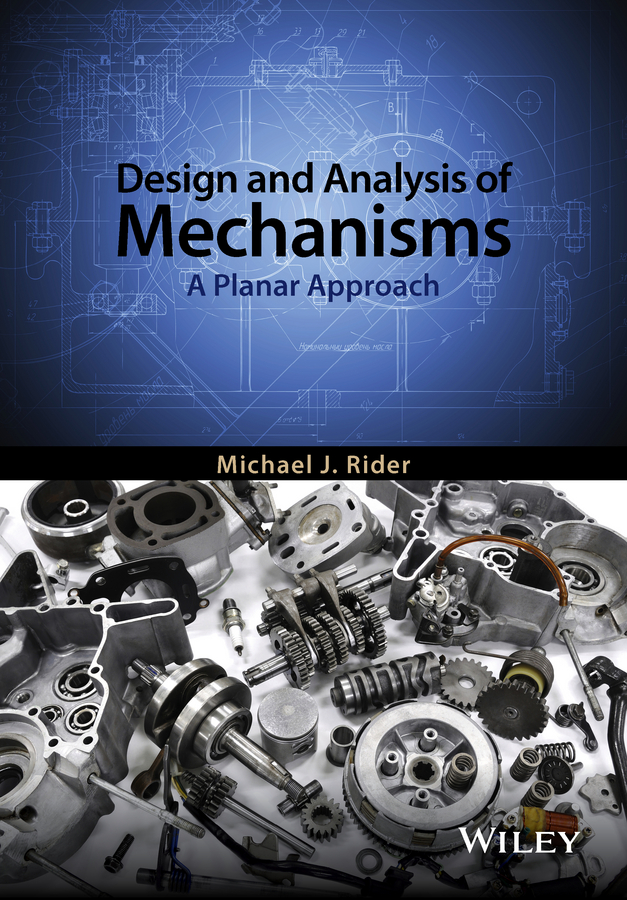
- Chapter 09
- bappA
- bappB
- Chapter 01
- Chapter 02
- Chapter 03
- Chapter 04
- Chapter 05
- Chapter 06
- Chapter 07
- Chapter 08
- Chapter 09
- Chapter 10
Michael J. Rider, Ph.D.
Professor of Mechanical Engineering, Ohio Northern University, USA

This edition first published 2015
2015 John Wiley & Sons, Ltd.
Registered Office
John Wiley & Sons, Ltd, The Atrium, Southern Gate, Chichester, West Sussex, PO19 8SQ, United Kingdom.
For details of our global editorial offices, for customer services and for information about how to apply for permission to reuse the copyright material in this book please see our website at www.wiley.com.
The right of the author to be identified as the author of this work has been asserted in accordance with the Copyright, Designs and Patents Act 1988.
All rights reserved. No part of this publication may be reproduced, stored in a retrieval system, or transmitted, in any form or by any means, electronic, mechanical, photocopying, recording or otherwise, except as permitted by the UK Copyright, Designs and Patents Act 1988, without the prior permission of the publisher.
Wiley also publishes its books in a variety of electronic formats. Some content that appears in print may not be available in electronic books.
Designations used by companies to distinguish their products are often claimed as trademarks. All brand names and product names used in this book are trade names, service marks, trademarks or registered trademarks of their respective owners. The publisher is not associated with any product or vendor mentioned in this book.
Limit of Liability/Disclaimer of Warranty: While the publisher and author have used their best efforts in preparing this book, they make no representations or warranties with respect to the accuracy or completeness of the contents of this book and specifically disclaim any implied warranties of merchantability or fitness for a particular purpose. It is sold on the understanding that the publisher is not engaged in rendering professional services and neither the publisher nor the author shall be liable for damages arising herefrom. If professional advice or other expert assistance is required, the services of a competent professional should be sought
Library of Congress Cataloging-in-Publication Data
Rider, Michael J.
Design and analysis of mechanisms : a planar approach / Michael J. Rider, Ph.D.
pagescm
Includes bibliographical references and index.
ISBN 978-1-119-05433-7 (pbk.)
1.Gearing.2.Mechanical movements.I.Title.
TJ181.R53 2015
621.815dc23
2015004426
A catalogue record for this book is available from the British Library.
The intent of this book is to provide a teaching tool that features a straightforward presentation of basic principles while having the rigor to serve as basis for more advanced work. This text is meant to be used in a single-semester course, which introduces the basics of planar mechanisms. Advanced topics are not covered in this text because the semester time frame does not allow these advanced topics to be covered. Although the book is intended as a textbook, it has been written so that it can also serve as a reference book for planar mechanism kinematics. This is a topic of fundamental importance to mechanical engineers.
deals with fundamental cam design while looking at different types of followers and different types of follower motion and determining the cams profile.
There are numerous problems at the end of each chapter to test the students understanding of the subject matter.
discusses the basics of MATLAB and how it can be used to solve planar mechanism problems.
Introduction to Mechanisms
Engineering involves the design and analysis of machines that deal with the conversion of energy from one source to another using the basic principles of science. Solid mechanics is one of these branches. It contains three major sub-branches: kinematics, statics, and kinetics. Kinematics deals with the study of relative motion. Statics is the study of forces and moments apart from motion. Kinetics deals with the result of forces and moments on bodies. The combination of kinematics and kinetics is referred to as dynamics. However, dynamics deals with the study of motion caused by forces and torques. For mechanism design, the desired motion is known and the task is to determine the type of mechanism along with the required forces and torques to produce the desired motion. This text covers some of the mathematics, kinematics, and kinetics required to perform planar mechanism design and analysis.
A mechanism is a mechanical device that transfers motion and/or force from a source to an output. A linkage consists of links generally considered rigid which are connected by joints such as pins or sliders. A kinematic chain with at least one fixed link becomes a mechanism if at least two other links can move. Since linkages make up simple mechanisms and can be designed to perform complex tasks, they are discussed throughout this book.
A large majority of mechanisms exhibit motion such that all the links moved in parallel planes. This text emphasizes this type of motion, which is called two-dimensional planar motion. Planar rigid body motion consists of rotation about an axis perpendicular to the plane of motion and translation in the plane of motion. For this text, all links are assumed rigid bodies.
Mechanisms are used in a variety of machines and devices. The simplest closed form linkage is a 4-bar, which has three moving links plus one fixed link and four pinned joints. The link that does not move is called the ground link. The link that is connected to the power source is called the input link. The follower link contains a moving pivot point relative to ground and it is typically considered as the output link. The coupler link consists of two moving pivots, points C and D, thereby coupling the input link to the output link. A point on the coupler link generally traces out a sixth-order algebraic coupler curve. Very different coupler curves can be generated by using a different tracer point on the coupler link. Hrones and Nelsons Analysis of 4-Bar Linkages [1] published in 1951 shows many different types of coupler curves and their appropriate 4-bar linkage.
The 4-bar linkage is the most common chain of pin-connected links that allows relative motion between the links (see ). These linkages can be classified into three categories depending on the task that the linkage performs: function generation, path generation, and motion generation. A function generator is a linkage in which the relative motion or forces between the links connected to ground is of interest. In function generation, the task does not require a tracer point on the coupler link. In path generation, only the path of the tracer point on the coupler link is important and not the rotation of the coupler link. In motion generation, the entire motion of the coupler link is important, that is, the path that the tracer point follows and the angular orientation of the coupler link.
Next pageFont size:
Interval:
Bookmark:
Similar books «Design and analysis of mechanisms a planar approach»
Look at similar books to Design and analysis of mechanisms a planar approach. We have selected literature similar in name and meaning in the hope of providing readers with more options to find new, interesting, not yet read works.
Discussion, reviews of the book Design and analysis of mechanisms a planar approach and just readers' own opinions. Leave your comments, write what you think about the work, its meaning or the main characters. Specify what exactly you liked and what you didn't like, and why you think so.


